Personality strengths assessments designed to build an agile culture.
Personality, strengths and agility assessments that take traditional assessments to a whole new level and help you drive agility.
Everyone learns four specific agilities that produce four behavior shifts.
Switch norms more quickly to initiate a strategic realignment of the organization.
![Dark-Tilt-Framework-Model-2025[updated]](https://www.tilt365.com/hubfs/Dark-Tilt-Framework-Model-2025%5Bupdated%5D.png)
Speed up strategic culture shifts with Tilt-Agility™
When people learn the language of Tilt-Agility™, they can Intentionally Tilt to changing contexts quickly.
Psychological safety
Unconscious needs, mixed motives, ego fears, and internal conflict can lead to corporate dysfunction. By cultivating a growth mindset, you can build a generative culture.
Increase engagement
The modern workforce is changing, and so is how work culture is embedded. Customize and share your organizational message and values in a new, engaging way.
Leverage people metrics
Our assessments and people analytics allow you to quickly monitor your organization's health, identifying organizational strengths and potential warning signs.
Invest in your leaders
Team Agility Labs™ solves real problems. You can get certified internally or tap into our worldwide network of Tilt-certified practitioners.
Build a better culture
Personalize your organizational messaging with a Tilt Culture Kit™ that aligns people strategies with business objectives, increasing a sense of purpose and meaning.
Transform your culture
Shift the norms of your most influential teams to lead the way toward a generative culture.
"Don't be so focused on your preference that you fail to achieve your purpose.
"Michael Euliss, Motivational Speaker and International Leadership Coach
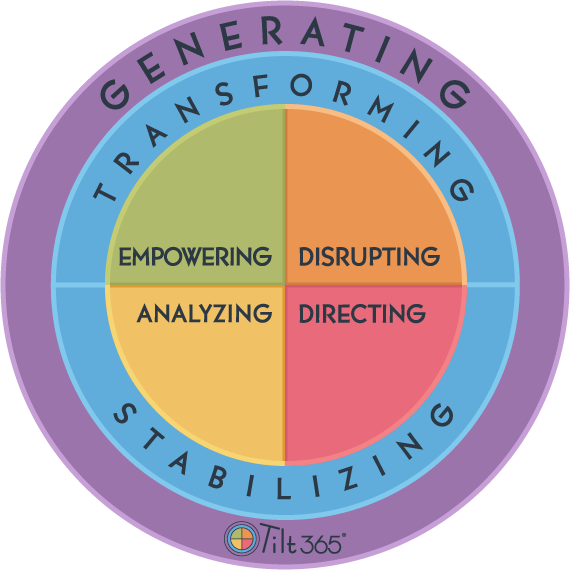
Explore our case studies
Find inspiration, no matter what industry you are in. See how our clients use Tilt to gain deep personal and team insights that accelerate leadership growth and create a healthy and agile culture
Who's Tilting
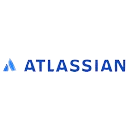
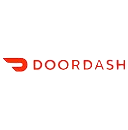
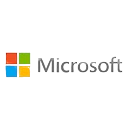
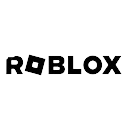
.png?width=1200&length=1200&name=zendesk-removebg-preview%20(1).png)
What people are saying
There’s nothing like the current moment to get started changing your life and career outcomes.
“Personality is where we begin, but it’s our character that truly shapes our destiny.”
-Pam Boney






My clients love Tilt because it delivers deep, actionable insights that can be applied as quickly as the pace of change in their organizations. Our coaching and consulting teams have used Tilt to break through silos on executive teams, assemble high-powered cross-functional project teams, and unleash the potential of key contributors- from front-line staff to Board members. Tilt offers a cohesive language and lens that accelerates strategic problem-solving and unlocks the skills and talents of every person, maximizing the investments you’ve made in your people.
Patrick Curran, Founder and Leadership Consulting
Respark
Most of the time we focus on WHAT we do and neglect HOW we do it. Tilt’s suite of products provide frameworks for individuals, teams and organizations to apply in the day-to-day. Once we realize our style preferences, there is an immediate reduction in the amount of time spent on the drama triangle along with a roadmap for constant growth and development - a non-negotiable in a global economy. I always say: 'how can you collaborate and cooperate effectively without knowing your preferences?'. I run a True Tilt Profile for all of my clients.
Abigail Stason, Master Teacher / Skillbuilder

We primarily use Tilt365 within enterprises, to equip and enable a mindset, attitude and plan to create high performance in the workplace. We do this by educating individuals and teams around the power and potential of behavioral choice; rather than an outdated and false belief that personality is fixed - when it is not. We also use Tilt365 as a driver of inclusivity in high performing teams, which ultimately leads to better decision making, business planning and sometimes even efficiency - just by being more mindful and intentional around our collective choices.
Gary Cole, Founder and Managing Director
Archipelo Coaching
We have been utilizing the Tilt65 True Tilt Profile tool for several years at Utah Transit Authority and it has become a critical component to many of our Leadership Development training programs. This is a fantastic tool we can use to learn more about ourselves in terms of social preferences, how we react in times of conflict/stress, and how we are showing up to other people in different situations. As a Leadership Development Training Specialist, I would highly recommend the True Tilt Profile to any client-based organization seeking a tool that will assist in the personal and professional development of its employees!
Shari M. Burgess, Leadership Development Administrator
Utah Transit Authority
FAQ
What is the culture of a company?
Culture is invisible, expressed indirectly through common behaviors and norms across the company. It is what people expect others to do, to follow the inexplicit cultural norm of this ‘tribe’.
Can culture be changed?
Yes, organizational culture can be changed. However, since this often involves the change of many people across different business units, locations, and even countries, this takes time.
What is the best way to change culture?
Since culture change is a long-term process, effort to change the culture of influential teams (or micro-cultures) is a faster and more effective way to drive bottom-up change in an organization. A team’s climate is directly influenced by the personality of it’s leader, so changing the leader will result in rapid changes in the team’s climate. A leader’s personality defines and shapes team culture, so changing their behaviors requires an increase in self-awareness. Assessments designed to increase self-awareness and are commonly used to catalyze changes in leaders, teams and, ultimately organizational norms.
What are symptoms of organizational dysfunction?
There are many ways that a negative organizational culture can manifest, such as dysfunctional workplace management, but the outcomes are similar. There is a dysfunctional corporate culture when the behaviors and systems encourage competition within teams, discourage trust, and attempt to motivate action through fear.
What are the four clues of a toxic culture?
Corporate dysfunction arises in the behavior of leaders and employees and often shows up within team dynamics. Dysfunctional workplace behaviors set the wrong tone for positive interaction and create an impediment to success. Here are the four clues that tell you that you might have a toxic culture: Power-seeking and dominant behavior, Status-seeking and diminishing behavior, Approval-seeking and blaming behavior, and Attention-seeking and fabricating behavior.
What is good company culture?
A company that is agile is healthy. An agile culture's underlying and central ingredient is a strong internal character, allowing innovation likely to occur. Way beyond “soft skills'', being agile means showing up focused, influential, and driven toward a common goal. Specifically, it means operating from wisdom, courage, resilience, and humanity all at once.
How can Tilt365 assessments be used for leadership development?
The Tilt365 framework is a mental model that illustrates the 12 character strengths of leaders that can produce a team-level climate that produces innovation and generativity. It represents the art of leadership with an array of strengths that incorporate the necessary tension between stability and change that helps teams perform better. Tilt365 results can provide valuable insights into a leader's tendencies to help identify areas where leadership skills can be improved. It can also help leaders better understand their team members' preferred behavioral tendencies for leading more effectively.
Why are personality assessments important in the workplace?
Personality assessments can be valuable when appropriately used in the workplace, as they measure persistent differences in how people perceive and interact across situations. Personality assessments can also be useful tools in leadership development and team development. The feedback can help individuals understand themselves and others, and offer strategies to grow personal agility.
How can HR use personality assessments?
HR practitioners can use strengths-based personality assessments in many ways, including; personal development, team development, performance management, employee relations, human due diligence, culture transformation, and much more.
How are personality assessments often mis-used in organizations?
Personality assessments that are used for profiling or weaponising types as “wrong” or “bad” from a trait standpoint is a typical mis-use. Hiring based on “type” is also commonly mis-used, for example, by implying that a person’s “type” is either good or not good for a certain job or role without scientific evidence. This is why some assessment should be rigorously tested for the use-case of hiring.
Can I use these assessments for hiring/selection/promotion?
Tilt365 assessments are designed for use in development and not specifically researched for use in selection criteria. Many organizations use Tilt365 assessments in onboarding very early post-selection and can be used in conjunction with other selection methods that ensure a thorough hiring process.
Although personality is not a protected class, assigning a single personality to an individual under the impression that they cannot change is a type of profiling that if used as the basis for hiring, firing, promotions, demotions, or succession planning can potentially violate the Americans with Disabilities Act (“ADA”), Title VII of the Civil Rights Act of 1964 (“Title VII”), and the Age Discrimination in Employment Act (“ADEA”).
At Tilt365, we recommend hiring people for their skills, knowledge, abilities and character strengths, not their personality traits.
Why should I use Tilt365 assessments if my organization already uses other assessments?
Many personality assessments don’t provide memorable results. And what you can't remember, you won't be likely to apply. Yes, people are more complex than four patterns, but most business leaders don't have time to learn numerous letter combinations and types that are not linked to a business framework. The Tilt patterns are easy to remember because they clearly describe the associated behavioral patterns. For example, 'Connection' Tilts enjoy making and maintaining social connections. Tilt addresses the additional complexity of humans through the Unique Amplifier™, which is unique to each individual.
To take a deeper dive, visit our two blogs on why we built a better personality assessment for agile teams and the slightly brighter truth behind personality assessments. Taking the True Tilt Personality assessment, you can skip right to finding your strengths in as little as five minutes.
What are the mindsets associated with the Tilt365 framework and assessments?
The Tilt365 framework indeed consists of the following mindsets:
· Protective Mindset: This mindset emphasizes self-preservation and maintaining personal boundaries. It focuses on self-protection, risk aversion, and ensuring personal well-being.
· Competitive Mindset: The Competitive mindset emphasizes striving for success, outperforming others, and achieving personal and organizational goals. It fosters a drive for achievement, ambition, and a focus on being the best.
· Integrative Mindset: The Integrative mindset emphasizes collaboration, teamwork, and seeking win-win outcomes. It promotes cooperation, synergy, and the ability to bring diverse perspectives together.
· Adaptive Mindset: The Adaptive mindset focuses on flexibility, agility, and the ability to navigate change. It involves being open to new ideas, adjusting to new circumstances, and continuously learning and evolving.
· Agile Mindset: The Agile mindset emphasizes responsiveness, adaptability, and embracing iterative approaches. It promotes the ability to pivot, experiment, and rapidly respond to feedback and changing requirements.
· Generative Mindset: The Generative mindset is considered the ideal mindset within the Tilt365 framework. It represents a mindset of growth, contribution, and making a positive impact. It encompasses qualities such as mentorship, collaboration, and leaving a meaningful legacy.
It's important to note that the Tilt365 framework views these mindsets as a holarchy rather than a hierarchy. This means that each mindset has its own unique value and can be beneficial in different contexts. The framework recognizes that individuals may naturally lean towards one or more mindsets but encourages the development and integration of all mindsets to enhance overall effectiveness and adaptability.
What does the Tilt365 framework and assessments measure?
The Tilt365 framework measures four dimensions referred to as meta-strengths. These dimensions are:
· Humanity: The Humanity meta-strength focuses on empathy, compassion, and the ability to connect with others on an emotional level. It encompasses qualities such as understanding, kindness, and building strong relationships.
· Wisdom: The Wisdom meta-strength emphasizes critical thinking, judgment, and the ability to make informed decisions. It involves seeking knowledge, applying experience, and demonstrating sound reasoning.
· Courage: The Courage meta-strength encompasses bravery, taking risks, and overcoming fears. It involves stepping outside of one's comfort zone, embracing challenges, and showing resilience in the face of adversity.
· Resilience: The Resilience meta-strength centers on bouncing back from setbacks, adapting to change, and maintaining a positive mindset. It involves perseverance, flexibility, and the ability to recover and grow from difficult situations.
These meta-strengths reflect important aspects of personal and professional development, and they provide a framework for understanding and enhancing one's capabilities in these dimensions. By assessing and developing these meta-strengths, individuals can cultivate a well-rounded approach to their personal growth and performance.
How does the Tilt365 framework relate to agile attributes and principles?
Tilt365 is a personality development framework (and assessments) that aims to help individuals develop and enhance their strengths across various dimensions. While there isn't a specific 'Agile' personality, you can learn to Tilt intentionally and incorporate the following agile attributes into your personal development to align with agile principles:
· Adaptability: Embrace change and cultivate a mindset that sees opportunities in shifting circumstances. Practice flexibility and be open to new ideas, approaches, and feedback.
· Collaborator: Strengthen your ability to work effectively with others. Foster a collaborative mindset, actively listen to others, share knowledge, and contribute to team success.
· Communicator: Hone your communication skills to convey ideas clearly and concisely. Foster effective and transparent communication with team members, stakeholders, and customers.
· Problem Solver: Develop strong problem-solving skills and critical thinking abilities. Embrace a proactive attitude towards identifying and resolving challenges to keep projects on track.
· Self-Motivator: Cultivate self-motivation and take ownership of your work. Set clear goals, manage your time effectively, and stay focused on delivering value and meeting deadlines.
· Growth Mindset: Adopt a growth mindset that values continuous learning and improvement. Embrace challenges as opportunities for growth, seek out feedback, and actively pursue personal and professional development.
By incorporating these agile skills into your personal development journey, you can enhance your abilities and align them with the principles of agility. Remember, developing an 'agile personality' is about embracing the agile mindset, embracing collaboration and adaptability, and continuously improving your skills and approach to work.